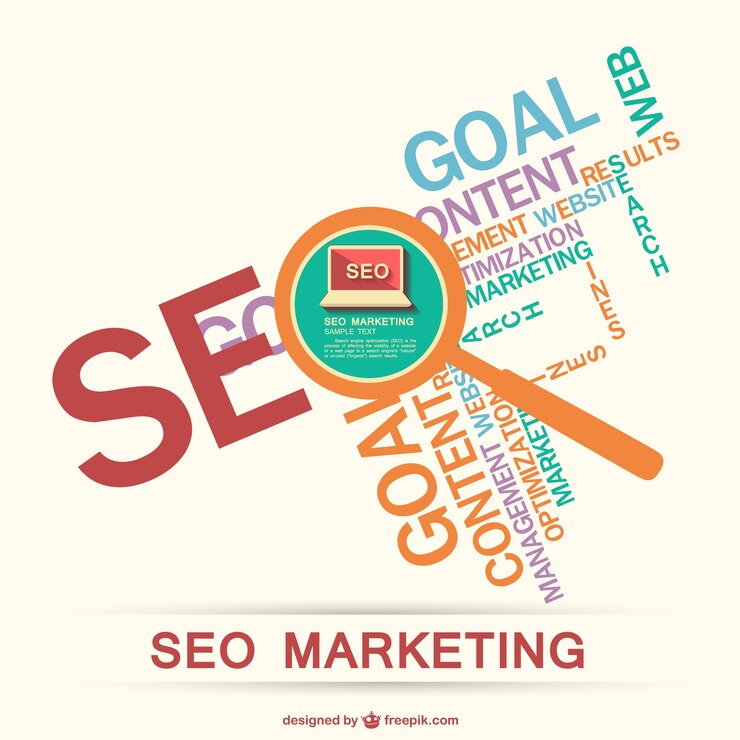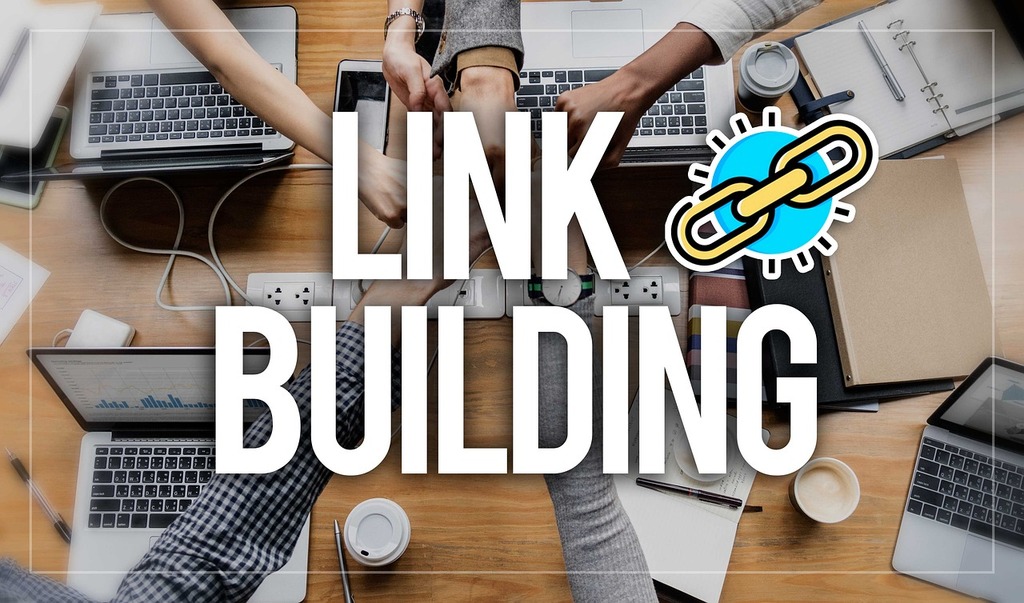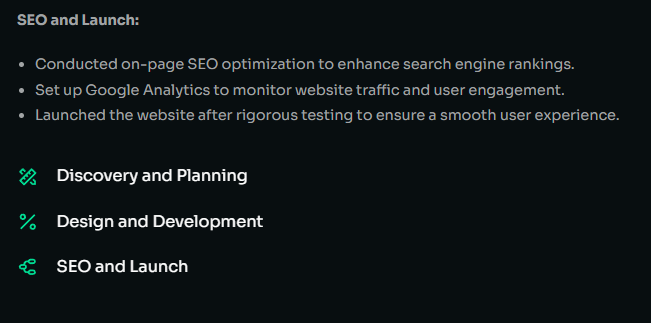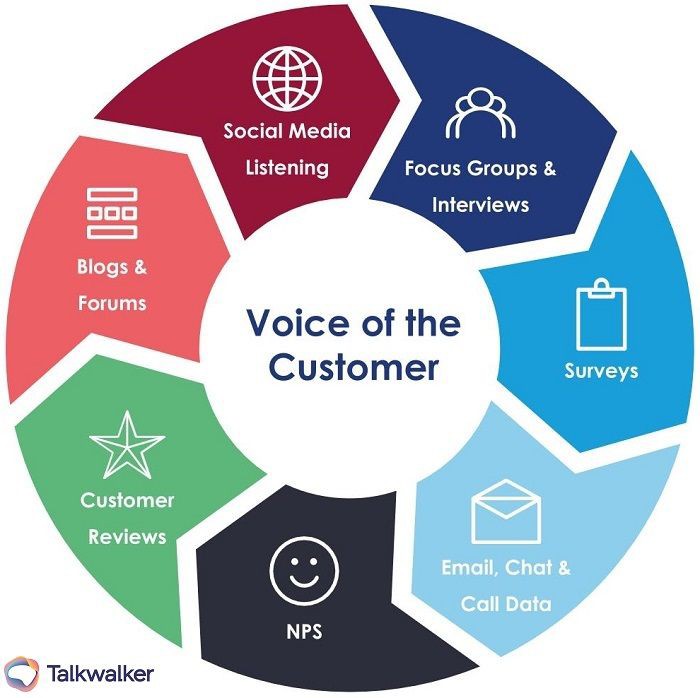- Introduction: The Overlap Between Web Design and SEO
In today’s digital landscape, success is not solely about having a visually appealing website; it’s also about having a site that performs well in search engines. SEO (Search Engine Optimization) and web design are closely interconnected. While an attractive design draws visitors in, a well-structured, SEO-friendly site keeps them engaged and helps elevate your business in search engine rankings.

So, how does web design impact SEO? How can businesses ensure their websites are not only visually striking but also effective in search engine performance? This article will explore the key design elements that influence SEO rankings and how Fogofy Ltd expertly combines design with SEO-friendly practices to help clients achieve growth.
Why Web Design Is More Than Just Looks
Indeed, a visually stunning website can create a positive first impression. However, in the competitive online landscape, appearances alone aren’t enough. Web design extends beyond aesthetics; it encompasses website functionality, structure, and usability—all of which directly affect SEO. If your site is difficult to navigate, slow to load, or not optimized for mobile devices, users will leave, and Google will take notice.
SEO and Web Design: A Critical Partnership
SEO and web design must work together in harmony. Google’s algorithms assess various on-site factors, including structure, load time, and mobile-friendliness, meaning design must support these elements to improve rankings. This partnership is crucial for your website’s visibility, and Fogofy Ltd excels at integrating these two essential components.

2. The Impact of Site Structure on SEO
One of the most important aspects of web design that influences SEO is site structure.
How Clear Navigation Boosts Search Rankings
Clear navigation is not just user-friendly; it’s also friendly to search engines. If users can easily navigate your site, search engine crawlers will too. Sites with an intuitive structure tend to rank higher because they allow crawlers to efficiently index pages.
Proper Use of Headings for SEO
Headings (H1, H2, H3, etc.) not only organize content but also provide context for search engines. A clear hierarchy of headings enhances both user experience and SEO by informing Google about the content’s subject matter. Fogofy ensures that every page is structured with SEO in mind, utilizing headings that enhance visibility.

URL Structure and SEO Performance
An SEO-friendly URL structure is concise, descriptive, and easy to read. When URLs are clean and include keywords relevant to the content, search engines can rank those pages more easily. Fogofy prioritizes optimized URLs to improve SEO performance.
3. Load Speed: A Key Factor for SEO and User Experience
Website speed is more than just a convenience; it is a significant ranking factor for Google.
The Link Between Load Speed and Bounce Rates
A slow website can lead to increased bounce rates, which signals to Google that your site isn’t providing a good user experience. If users leave before your page fully loads, it negatively impacts engagement and rankings. Load speed has a direct influence on SEO, and Fogofy Ltd knows how to build lightning-fast websites that minimize bounce rates.
Since 2010, Google has prioritized load speed in its ranking algorithms. A faster loading time enhances user experience and supports SEO efforts.
Google’s Emphasis on Fast-Loading Websites
In its ranking algorithms, Google has prioritized load speed since 2010. Websites that load quickly are more likely to meet user expectations, resulting in better search performance. At Fogofy, we focus on ensuring load speed remains a top priority throughout every project.

How to Improve Load Speed
Improving load speed often involves strategies such as optimizing images, leveraging browser caching, and minimizing CSS and JavaScript. Fogofy incorporates these techniques to build websites designed for speed, helping clients navigate the rankings and enhance the user experience.
4. Mobile Optimization: Why It’s Essential for SEO
With more than half of web traffic originating from mobile devices, optimizing your site for mobile is essential for user engagement and effective SEO.
Mobile-First Indexing: Google’s Priority
Google now employs mobile-first indexing, meaning it primarily assesses the mobile version of your website when determining rankings. If your site isn’t optimized for mobile users, you risk falling behind. Fogofy ensures that all websites adhere to a mobile-first design approach to maintain competitiveness in search results.
The Role of Responsive Design
Responsive design guarantees that your website adapts smoothly to various screen sizes and devices, ensuring that mobile users have just as positive an experience as desktop users. Fogofy specializes in creating responsive web designs to deliver a seamless user experience across all platforms.
Fogofy Ltd’s Expertise in Mobile-Optimized Designs
Our design team at Fogofy prioritizes mobile optimization in every project. From fluid layouts to user-friendly navigation, we ensure that your site captivates mobile users and ranks well in search engines.

5. UX Design and SEO: A Symbiotic Relationship
User experience (UX) design and SEO go hand in hand.
How a Positive User Experience Increases Dwell Time
An enjoyable and easy-to-navigate website encourages visitors to stay longer, increasing “dwell time.” This is a ranking factor that signals to Google that your site provides value to users. By focusing on an intuitive user experience, Fogofy helps clients to bolster both engagement and SEO.
Design Features That Improve SEO Metrics
Incorporating interactive features such as chatbots, intuitive forms, and clear calls-to-action can enhance user engagement, leading to higher conversions and improved SEO. Fogofy strategically integrates these elements to elevate overall user experience while optimizing for search engines.
Keeping Visitors Engaged with Interactive Features
Engagement tools, such as videos, sliders, and interactive infographics, keep users on your page longer. The longer users stay, the better your SEO performance. Fogofy Ltd skillfully weaves interactive features into web designs to maintain visitor interest.
6. Visual Elements and Their SEO Impact
Visual elements play a dual role: enhancing user experience and impacting SEO.
Image Optimization and SEO Benefits
Optimizing images by compressing sizes and adding descriptive alt text can enhance load times and improve SEO rankings. Fogofy ensures that all media files are optimized without sacrificing quality.
The Role of Alt Text for SEO
Alt text helps search engines understand what an image represents and is critical for accessibility, allowing users with visual impairments to navigate your site effectively. Fogofy includes SEO-friendly alt text in every image to boost rankings and inclusivity.
Fast-Loading Media Files: An SEO Necessity
Large media files can slow down a site and affect both user experience and SEO. Fogofy utilizes advanced techniques to ensure that media files load quickly without compromising quality, keeping your site optimized for users and search engines alike.
7. Fogofy Ltd’s Approach: Blending Design and SEO for Maximum Results
At Fogofy Ltd, we recognize that a successful website isn’t solely about design or SEO but about the strategic combination of both.
How Fogofy Integrates SEO Best Practices in Design
From the initial planning stages, we blend design and SEO strategies to create websites that are visually appealing, highly functional, and optimized for search engines.
Real-World Examples of Success
We’re proud to showcase numerous businesses that have enhanced their digital presence through our unique blend of design and SEO. Whether it’s a local retailer aiming to drive foot traffic or an e-commerce platform seeking to increase online sales, Fogofy has the expertise to achieve results.
Partner with Fogofy to Boost Your SEO and Business Growth
Choosing Fogofy Ltd means gaining a partner that understands how to merge aesthetics with technical SEO. We focus not only on creating visually appealing websites but also on ensuring that they perform well in search engines. By collaborating with us, you can secure an attractive site that ranks higher and converts visitors into loyal customers.
Conclusion: The Future of Web Design and SEO
The relationship between web design and SEO will continue to evolve as the digital landscape changes. With Google’s increasing focus on user experience, mobile optimization, and fast loading speeds, it is imperative for businesses to invest in professional web design that incorporates SEO best practices.
Fogofy Ltd stands at the forefront of this evolution, providing expert solutions that harmonize stunning design with cutting-edge SEO techniques. Whether you’re looking to revamp an outdated website or create an entirely new one, Fogofy Ltd is your ideal partner for a site that is both aesthetically pleasing and optimized for search engines, positioning your business for success.
FAQs
- How does website design affect SEO?
Website design influences SEO through site structure, load speed, and mobile optimization. A well-structured site allows search engines to crawl and index your pages easily, while fast load speeds and mobile-friendly designs enhance user engagement and improve rankings. - What is mobile-first indexing, and why does it matter?
Mobile-first indexing means that Google primarily uses the mobile version of your website for ranking purposes. With a growing number of users accessing the web on mobile devices, having a mobile-optimized site is crucial for SEO performance. - Why is load speed important for SEO?
Load speed is critical because slow websites lead to higher bounce rates, pushing visitors away before the site fully loads. Google considers load speed a ranking factor—quicker sites typically perform better in search results. - How does Fogofy Ltd ensure websites are both beautiful and SEO-friendly?
Fogofy Ltd merges technical SEO best practices with top-tier design. From optimizing structure and load speed to creating responsive, mobile-first websites, we ensure your site excels in both function and appearance. - What role does user experience (UX) play in SEO?
UX significantly impacts SEO by affecting how long visitors stay on your site and how easily they can navigate it. Positive user experiences contribute to better engagement metrics, which can improve SEO rankings. Fogofy specializes in crafting seamless UX designs that encourage user interaction while boosting SEO.










